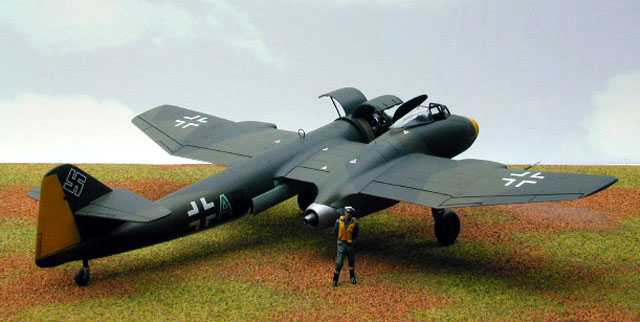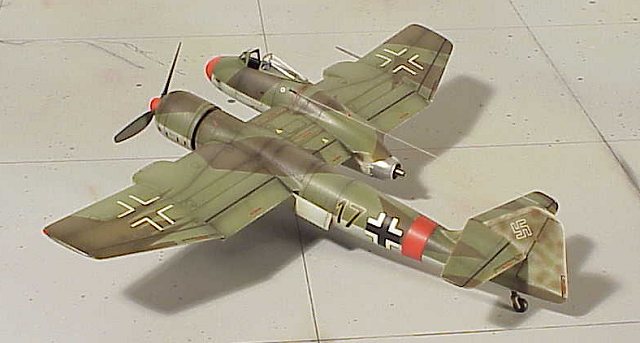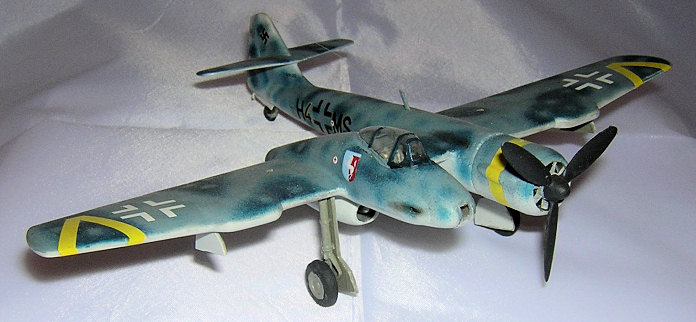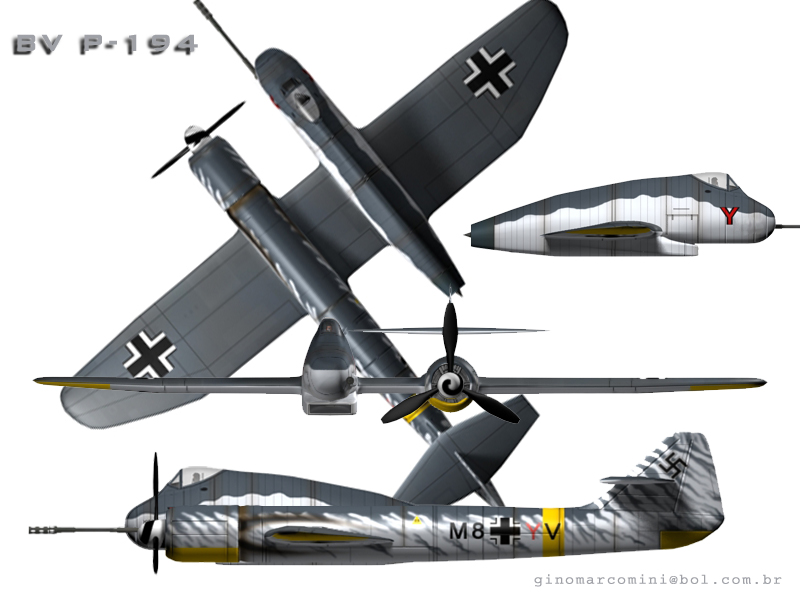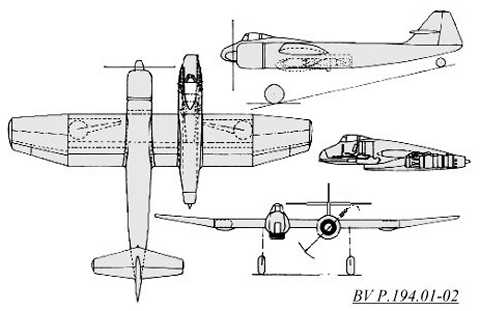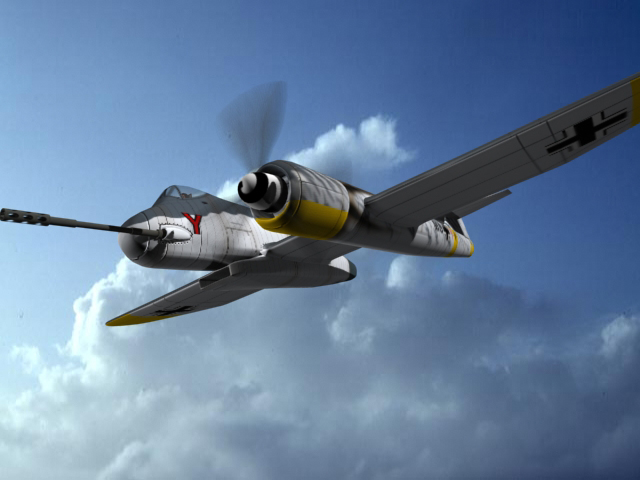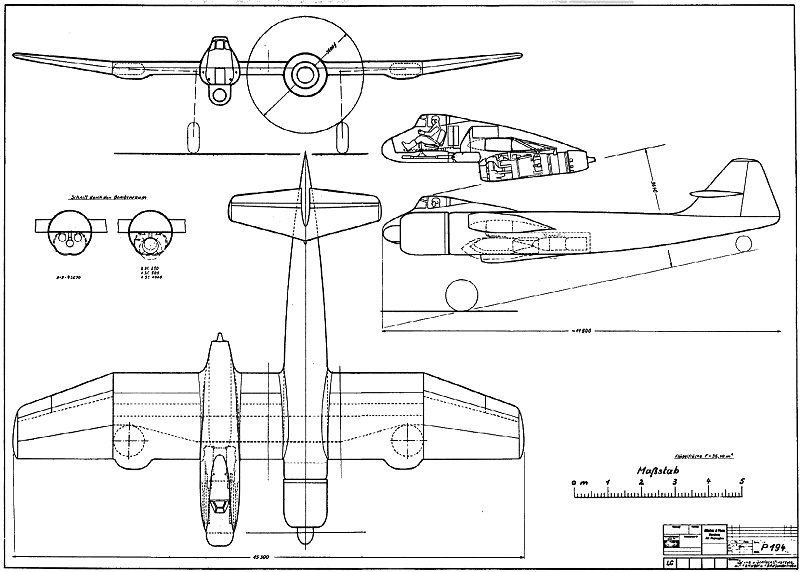Blohm & Voss P.194
Blohm & Voss P 194 was designed in 1944 by Blohm & Voss aircraft type. The draft never got beyond the drawing board stage. The P in the name stands for the project.
Special
The drive of the P 194 should consist of a so-called mixing drive, that is from a jet engine and an engine with a piston engine. The calculated speed in this case was at 860 km / h With this mixing drive the disadvantages of the Messerschmitt Me 262 should be avoided. The Me 262 was a pure jet aircraft, especially in the takeoff and landing phase is very vulnerable because the engines developed relatively little thrust at low speeds. In addition, jet engines react relatively slowly to changes in load. These disadvantages made the Me 262 an easy target for enemy fighters, which is why additional fighter had to be parked to protect the agricultural machinery. The United States took the concept and developed as the Ryan FR and the Curtiss XF15C.
Due to the asymmetrical arrangement of the aircraft component, the view of the pilot is not limited by the propeller. A further advantage of the asymmetric design is that resulting from use of a propeller torque forces can be compensated better. This design feature retired at Blohm & Voss like a red thread from the Blohm & Voss BV 141 by the designs P 177, P 178, P 194 and P 204
Variants
In order to meet the planned use of spectrum as a dive bomber, fighter aircraft, destroyers or reconnaissance, several variants of P 194 were configured.
- BV P.194.01 -02: One MK 103 was replaced with a MK 412 and the jet engine was installed below the cockpit.
- BV P.194.02 -01: The version 02 is the typical design described in the table
- BV P.194.03 -01: The jet engine was installed directly behind the cockpit. The tail unit was running and cranked the front of the cockpit changed.
- P.194.00 BV -101: In the two-seat reconnaissance variant pilot and the observer / radio operator sat back to back. The empennage was cranked.

